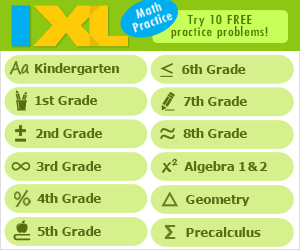8th Grade English Language Arts - Communication Standards
Links verified on 7/15/2014
To work on eighth grade communication standards, click on the numbers below to visit pages of internet resources for each of the learning standards.
Checks for Understanding are at the top of this page. Scroll down to find internet resources related to the State Performance Indicators (SPIs).
Checks for Understanding (Formative/Summative Assessment)
0801.2.1 Follow Instructions - Follow multi-step spoken instructions to perform single tasks, to answer questions, and to solve problems. 0801.2.2 Thesis of Speech - Identify the thesis of a speech in which the main idea may be explicitly or implicitly stated, concepts may be more abstract, and extended metaphors may be used, and determine the essential elements that elaborate it. 0801.2.3 Summarize - Summarize information presented orally by others in which the main ideas may be explicitly or implicitly stated, including the purposes, major ideas, and supporting details or evidence. 0801.2.4 Paraphrase - Paraphrase accurately challenging ideas and information presented orally by others. 0801.2.5 Summary and Paraphrase - Construct a summary and a paraphrase of a speech. 0801.2.6 Critique - Construct a critique of a speech. 0801.2.7 Identify Speech Structure - Identify and analyze the structure of a speech (e.g., sequential, chronological, problem-solution, comparison-contrast, cause-effect). 0801.2.8 Speech Structure - Begin to analyze the ways in which the style and structure of a speech support or confound its meaning and purpose. 0801.2.9 Listening - Listen actively in group discussions by asking clarifying and elaborating questions and by managing internal (e.g., emotional state, prejudices) and external (e.g., physical setting, difficulty hearing, recovering from distractions) barriers to aid comprehension. 0801.2.10 Support Thesis - Include relevant facts, reasons, details, and examples to support a relatively complicated thesis. 0801.2.11 Oral Presentation - Organize oral presentations maintaining a relatively simple three-part structure, previewing the content of presentation in introduction, offering ideas with supporting details, and providing a brief summary or conclusion. 0801.2.12 Organizational Pattern - Use an organizational pattern appropriate for a topic and purpose (e.g., sequential, chronological, problem-solution, comparison-contrast, cause-effect). 0801.2.13 Arrange Ideas - Logically arrange ideas and group related ideas in ways that enhance the topic. 0801.2.14 Transition Strategies - Connect ideas using a variety of transition strategies that signal addition of information and relationships between ideas (e.g., use listing words such as first, in addition, but, and however). 0801.2.15 Conclusion - Provide an effective conclusion that reinforces the focus of the presentation. 0801.2.16 Rhetorical Devices - Explore effective rhetorical devices such as rhetorical questions and anecdotes to engage an audience, repetition to reinforce ideas, and analogies to convey complex ideas. 0801.2.17 Presentation Skills - Employ presentation skills such as good eye contact, clear enunciation, effective speaking rate and volume, and natural gestures. 0801.2.18 Work Teams - Participate productively in self-directed work teams for a particular purpose (e.g., to interpret literature, solve a problem, make a decision). State Performance Indicators
SPI 0801.2.1 Purpose - Identify the purpose of a speech (i.e., to inform, to describe, to explain, to persuade, to entertain). SPI 0801.2.2 Audience - Identify the targeted audience of a speech. SPI 0801.2.3 Thesis - Identify the thesis and main points of a speech. SPI 0801.2.4 Engaging an Audience - Determine the most effective methods of engaging an audience during an oral presentation (e.g., making eye contact, adjusting speaking rate). SPI 0801.2.5 Note Cards - Organize a series of note cards in the most effective order for an oral presentation. SPI 0801.2.6 Speech Structure - Identify and analyze the organizational structure of a speech (e.g., sequential, chronological, problem-solution, comparison-contrast, cause-effect). SPI 0801.2.7 Teamwork - Select the most appropriate strategies for participating productively in a team (e.g., gain the floor in orderly ways, meet or set deadlines for completing each task, come to agreement by seeking consensus or following the majority). SPI 0801.2.8 Group Roles - Identify the functions and responsibilities of individuals within an organized group (i.e., reporter, recorder, information gatherer, leader, timekeeper). SPI 0801.2.9 Summary vs Critique - Distinguish between a summary and a critique. Review Help Resources to help review Eighth Grade English Language Arts standards
Search Internet4Classrooms

Custom Search






